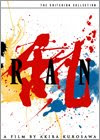
Gas is a lot more affordable than it was just a few weeks ago, I had a little time on my hands, so yesterday I did something I've wanted to for years: attend the Green Valley Book Fair.
The book fair is in the Shenandoah Valley just south of Harrisonburg, VA right off Hwy 81 South. If you love books and live in the Washington D.C. area, you owe it to yourself to check it out. It was a loooooooong haul for me: nearly three hours each way. But it was worth it.
The Book Fair is open six times a year for two weeks at a time, each time featuring 500,000 new books. That's right, half a million. They're all new and from what I could tell, all remaindered, but in pristine condition. (You can check out more about the Book Fair and its history, including some photos, here.)
And the prices are quite good. I didn't buy any hardcovers, but it looked like most of them were in the $5 - $10 range, very reasonable. Most audiobooks (on CD, but they also have tapes) ran about $7.50. Most of the trade paperbacks I saw were within the $2.50 - $5.00 range.
The first room I entered contained an enormous selection of children's books of all kinds. An entire wall housed nothing but YA novels with separate sections for mystery, sf/fantasy and Newbery books. I found plenty of board books and picture books (including several Caldecott winners) for my nieces, which was nice. The rest of the room consisted of more kids books (chapter books, non-fiction, easy readers, etc.) books on crafts, hobbies, home improvement, cooking, teaching resources and tons of other stuff.
A hallway led to another room which housed audiobooks, fiction (classics, 20th century writers, non-American writers, romance, paranormal, Southern writers, African American writers, poetry, sf/fantasy, mystery, western, graphic novels, gay/lesbian fiction, large print... hmmmm.... Did I leave anything out? This room also contained reference, travel, business, finance, and a few other odds and ends.
Downstairs housed basically everything else: art, religion, biography, philosophy, photography, health, politics, current events, sports, nature, computers, music, television, film, gardening, science, African American non-fiction, and on and on.
I'll list the titles when I write my November Books Bought post in a couple of days, but I can tell you that in addition to the books I bought as gifts, I spent $25 for seven brand new trade paperbacks. Not too bad.
If there was one major disappointment with the Book Fair, it was the scant offering of graphic novels. Maybe they'd been picked over from the day before (I went on the second day), or maybe they just don't get much.
The Green Valley Book Fair is an event definitely I plan to attend again, but probably only once a year due to the distance involved. If you're even in the area, be sure to check it out.
Here's their schedule for 2009:
March 14 - 29
May 9 - 25
June 27 - July 12
Aug. 22 - Sept. 7
Oct. 10 - 25
Nov. 27 - Dec. 13




























